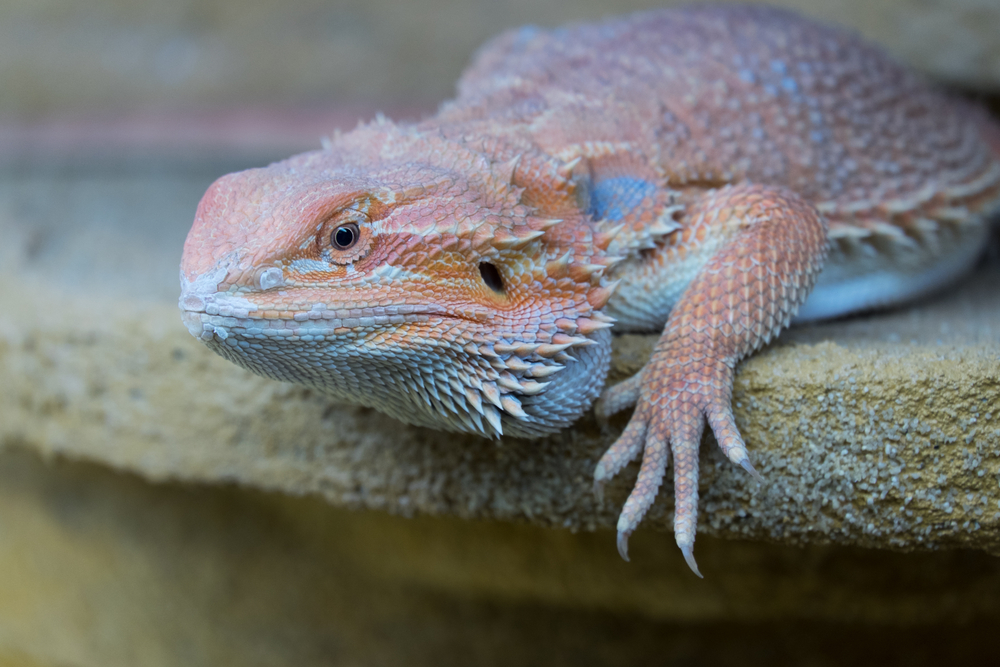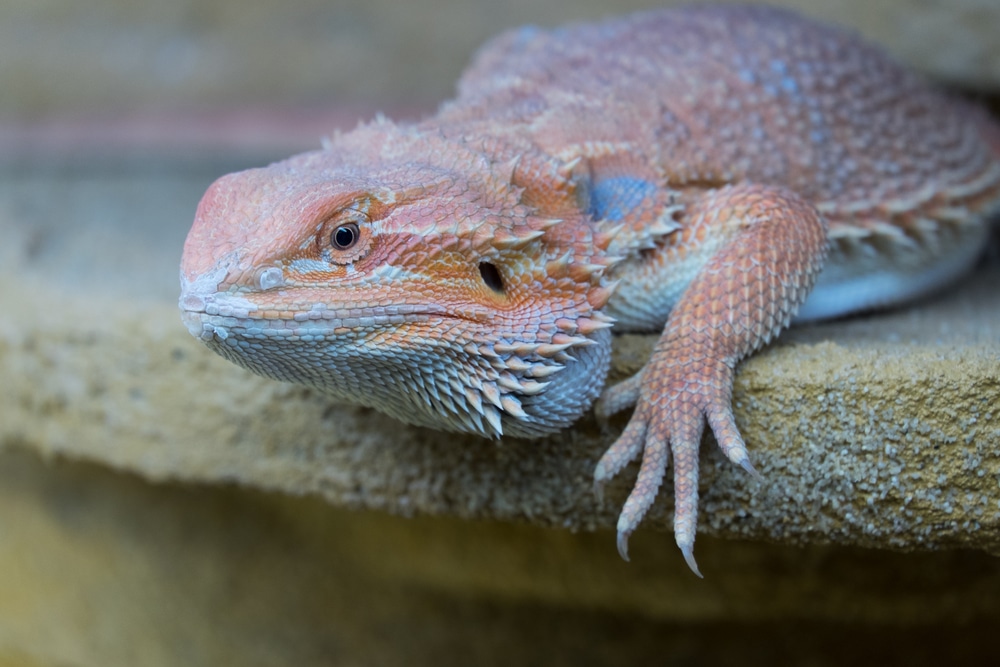If caught early, NSHP can sometimes be cured by a change in husbandry habits, especially in regard to UVB and diet supplementation.
Question: I have a bearded dragon that’s about 4 months old, and he has mostly stopped using his back legs. He seems quite happy otherwise, but I am concerned. I feed him four large mealworms and one leaf of bok choy every day. I keep the temperature in his wood and glass enclosure at around 100 to 105 degrees Fahrenheit. He has an Exo Terra Desert UVB 150 Reptile Lamp as well as another heat lamp.
I live in Hanoi, Vietnam, where buying reptiles and pet supplies is not easy or cheap. Thanks for any help or advice you can give.
Jody Goodwin

MAGALOS/SHUTTERSTOCK
If caught early, NSHP can sometimes be cured by a change in husbandry habits, especially in regard to UVB and diet supplementation.
Sorry to hear about your bearded dragon, Jody. It sounds as if he may have nutritional secondary hyperparathyroidism (NSHP), which results when a reptile is not able to properly absorb and metabolize calcium, whether due to a lack of exposure to UVB light and/or a lack of dietary calcium and vitamin D3. When this happens, calcium is leached from the animal’s bones, and rear-limb paralysis is a classic symptom of this.
Want To Learn More?
Nutritional Secondary Hyperparathyroidism In Reptiles
If caught early, NSHP can sometimes be cured by a change in husbandry habits, especially in regard to UVB and diet supplementation. However, if your bearded dragon is not using his rear legs, it sounds as if it’s an advanced case. You should take him as soon as possible to a veterinarian who is familiar with the treatment of reptiles.
It sounds as if you may have the UVB light covered, but four mealworms and a leaf of bok choy per day likely will not provide sufficient nutrition for your pet, especially if you are not supplementing with a good calcium/D3 supplement. Bok choy is a calcium-rich vegetable and a good one to feed, but try offering a more varied diet with additional veggies such as mustard and collard greens, which are other high-calcium options, as well as zucchini, carrots, romaine lettuce, etc. (avoid iceberg lettuce; it is not nutritious). Small amounts of fruit, such as mango, banana, etc., can be offered, too, though avoid highly acidic fruits.
Sprinkle a good-quality calcium/D3 supplement made for reptiles on these fresh foods. Such supplements are readily available at pet stores here in the U.S., but if you have trouble finding them in Hanoi, consider ordering some online. Many companies that specialize in reptile products offer them. Consider offering crickets, too, and dust all insects with the supplement.
The temperatures you mention are great for a hot spot, but your beardie should be able to retreat to cooler temps, too. Locate the heat lamp at one end of the enclosure to create a gradient with cooler temps of about 80 degrees toward the opposite end.
Information regarding NSHP can be found at ReptilesMagazine.com/NSHP. Check your husbandry against what is recommended in our bearded dragon care sheet at ReptilesMagazine.com/beardiecare, and a detailed article regarding supplemental nutrition in reptiles can be found at ReptilesMagazine.com/supplement. All three of these links should help you better understand what may be going on with your bearded dragon, but again, Jody, the first thing you should do is get him to a reptile veterinarian. Though the rear-leg dragging you describe is common with NSHP, something else may be going on. Good luck! —Ed.


